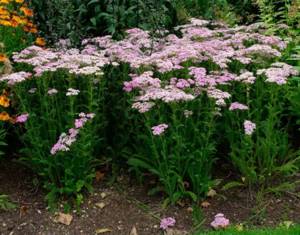The purpose for which thousands of Russian gardeners plant tulips in their dachas every year is obvious to anyone. These beautiful flowers are a wonderful decoration for the garden and yard, they lift your spirits and, in general, growing them is a very interesting and useful hobby in many ways. However, tulips have one serious drawback - a very short flowering period. Depending on the variety, weather conditions and some other factors, you can admire the flowers for only 8 - 14 days, after which the plants quickly lose their presentable appearance. To prevent the flowerbed from being empty for the rest of the year and spoiling the appearance of the garden, in place of the faded tulips, you can plant other flowers that will take over the baton.
Prolong flowering
Before talking about what flowers to plant after tulips , it is worth considering ways to extend the flowering period of the tulips themselves. With a certain amount of luck, you can achieve very good results in this regard.
Today, there are many different varieties of tulips available on the market, which differ, among other things, in the time they begin to bloom. Instead of planting flowers that bloom at the same time, place both early and late varieties in the flowerbed. In a couple of years, you will be able to assemble a collection of bulbous tulips in which the tulips will bloom one after another in strict order - first early, then regular, and then late varieties. As a result, instead of 10 days, you will be able to extend the beauty holiday for a month, or even more.
There are also more sophisticated methods. For example, you can artificially delay the start of plant growth. To do this, in the winter, in the flowerbed where the tulips are planted, you need to accumulate as much snow as possible. Moreover, it is not enough just to throw a snowdrift: the snow must be compacted properly and watered to form a thick, durable ice shell. Before the onset of spring heat, you need to throw sawdust on top of the ice in a layer of 15-20 cm, which will significantly slow down the melting of the shell, which in turn will delay the onset

growing season. Depending on when you want to see flowers, you can remove sawdust from early April to early May. Moreover, if the flowerbed is large, they can be removed in several stages - first from one area, then from the second, then from the third.
By combining different varieties and manipulating the time of snow melting in the flowerbed, you can achieve truly fantastic results: within one and a half to two months you will have at least one flowerbed with blooming tulips. And only then will you have to think about what to plant after the tulips .
Depending on the flowering period
Tulips can also be planted according to their flowering time. It won’t be very beautiful when the garden bed blooms completely at one time. To do this, you can plant the selected area with different varieties. For example, one variety will fade, and the following varieties of tulips will bloom behind it.
This way, the flower beds will be constantly filled with flowers and will create a chic appearance to the garden, giving the design a special appearance.
You may be interested in: Flower beds in front of the house: how to design them, what flowers to choose
Spring planting
Another way to extend the flowering period of tulips (or rather, delay its beginning) is to change the time
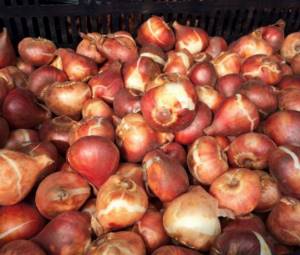
planting bulbs. This method can hardly be called “academic,” but many gardeners claim that it really works, and therefore it is also worth telling a little about it.
So, every tulip lover knows very well that the optimal time for planting bulbs in the place where they bloom is autumn. In particular, it is most preferable to do this from mid-September to the end of October. Of course, the exact time of planting depends on the climatic conditions of the region (the further north you go, the earlier you need to plant), as well as on the weather conditions of the current year (the bulbs should have at least 20-30 days to take root before frost hits) .
With all of the above, there is a fairly large group of supporters of spring planting. And many of them prefer this method precisely because it allows them to delay flowering for several weeks. Untimely planted flowers will bloom much later than usual, and when all your neighbors’ tulips have already faded, yours will just enter their most beautiful phase. If you also have autumn-planted tulips, the overall flowering period of the flowerbed can be quite long.

The main problem with autumn planting is the fact that in most of Russia in April there is still a very high probability of frost, and snow in many regions often lies until the middle of the month. In such conditions, the bulbs will take too long to take root, or may even die. Therefore, everywhere, except perhaps the North Caucasus, it is recommended to plant the bulbs in a pot and place it on the windowsill in a room at room temperature. And only after it gets completely warmer outside can the pot of tulips be taken outside.
Transplanting to a flowerbed should be done very carefully, trying not to destroy the clod of earth around the bulb, as this can also disrupt the flowering. However, you can even simply bury the pot in the flowerbed without removing the bulb itself from it.
The correct combination of tulips from the compatibility side
You cannot put tulips in the same vase with:
- daffodils;
- hyacinths;
- woody varieties of ornamental plants.
Daffodils and hyacinths secrete mucous substances into the water, which envelop the capillaries of the tulips and prevent the flowers from feeding. This leads to their rapid withering. Florists recommend combining spring flowers with bulbous varieties. Representatives of the same class get along better. The only exception is the combination of roses, which belong to the tree class, with lilies, which are bulbous.
Companion plants
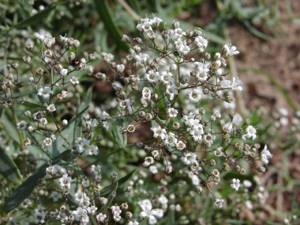
No matter what tricks you use, sooner or later the tulips will fade and the flowerbed will become orphaned. Other flowers or decorative foliage plants, planted together with tulips, but blooming after them, will help fill the resulting voids. The best successors for spring bulbous flowers are all kinds of autumn-blooming perennials.
Here's what you can plant in place of tulips after flowering :
- we swing paniculata, or gypsophila;
- geranium (Geranium);
- Aster novibelgii and other flowers.
However, these plants bloom in the fall, and therefore are not suitable for those who want the flowerbed to continue blooming immediately after the tulips. In this regard, if you intend to dig up tulip bulbs every year, then it is better to give preference to perennial companions that bloom immediately after the tulips, or at least are able to quickly cover drooping bulbous stems that have lost their presentability. The latter include hostas, which bloom just in time for the tulips to finish flowering.

Instead of hosta bushes, you can use astilbe, brunners and other similar plants. A classic companion to tulips are also forget-me-nots, which, if desired, can be used to sow all the spaces between the tulips.
If you decide to use the companion plant method, you should only use plants that have the same nutritional regime as the tulips. If you plant moisture-loving flowers, then with intensive watering the tulip bulbs will begin to rot, and if there is insufficient moisture, the “companions” will dry out.
Choosing a place for a flower bed with tulips
Since flowers develop from bulbs planted in the fall, the area for planting must be identified and prepared in the previous season. Before hibernation, the bulbs grow roots, and in the spring they throw out a stem with a bud. At the end of flowering, the plant gains strength for the future life cycle. Most often, it is dug up for the summer and stored until a new planting.
Design of the tree trunk circle
The area for a tulip flowerbed at the dacha must meet the following requirements:
- be as even as possible, without stagnation of excess moisture in the recesses, or be on an elevation (overmoistening is unacceptable for the bulbs - there is a danger of rotting or freezing);
- be well lit and warmed up so that the stems grow even and strong, and the flower petals do not lose color (the north side of buildings is not suitable);
- have protection from strong gusts of north wind that can damage flowers and break stems (if drafts cannot be prevented, it is better to plant low-growing species).
Planting in a flowerpot
The soil in a tulip flowerbed should be fertile, non-acidic, non-clayey, with good aeration and drainage. A month or two before planting, the soil is dug up to a depth of about 40 cm, cleared of weeds, disinfected from pathogens and filled with complex mineral fertilizers.
Small flowerbeds of tulips in the garden can be laid out in the area of tree trunks, near bushes, gazebos or along paths. Variegated flowering groups look great and develop on a green lawn or lawn.
Discount near the house
Beautiful urban flower beds with tulips, where plants of the same variety or in various combinations are planted, have not lost their relevance. A flowering corner under the windows of a high-rise building will delight nature lovers. Its best location is closer to the south side of the building. Precipitation flowing from the roof should not significantly flood the area.
In order for the flowering of spring beauties to be long and spectacular, you need to choose varieties that are suitable not only in appearance (height, color and shape of the petals), but also take into account the timing of the appearance of buds. The decisive point will be the decision on the frequency of digging the bulbs, the use of compacting or replacement ornamental crops.
What to plant after tulips

Many experienced gardeners even use “designer” flower beds, which allow them to be constantly maintained in a blooming state. The essence of the idea
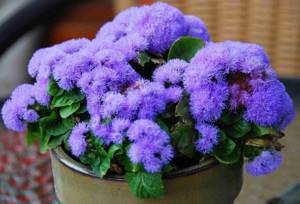
Important features of planting tulips in the garden
To grow tulips, you need to familiarize yourself with the main features of planting them in the garden. This procedure is carried out in three successive stages:
- Selecting a site for planting. When choosing a suitable place, pay attention to its illumination. Flowers grow more slowly in the shade, so you need to choose a well-lit place in the garden. Also, when choosing a place for planting, carefully inspect the soil. The soil should not be churned and have high acidity. If the garden has clayey and dense soil, you will have to plant the bulbs in separate containers.
- Site preparation. Before planting, the garden or flower bed is pre-prepared. The soil is dug up and fed to make it more fertile and loose. You also need to get rid of remnants of weeds and other plants.
- Landing. When planting tulips, make holes 10-12 centimeters deep, into which 2-3 bulbs are placed. Then they are sprinkled with soil and then watered with water. If planting is carried out in early spring, the flowerbed is covered with straw for additional protection from frost.
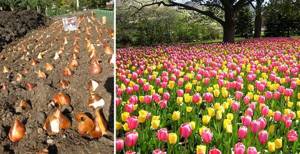
Combinations with other bulbous plants
Spring bulbs such as Puschkinia, muscari, Ornithogalum, anemone, rhizomatous and tuberous, are also often planted next to tulips. Massive hyacinths create spots of rich color that can expand the color range of tulips that do not have blue in their palette. Perhaps this is why blue varieties of hyacinths are so often found in joint plantings. But this is a very dangerous, binding combination. Often such cold spots completely stand out in color, tone, saturation from the general color scheme and cause bewilderment rather than joy. But the soft shades of blue, characteristic of mouse hyacinth (Muscari) or varieties of anemone (Anemone blanda), create a harmonious picture. Its blue and light blue varieties are good in combination with yellow and cream tulips; planting next to white “glasses” would give a sharper contrast. An interesting decorative effect is obtained from the joint planting of tulips with small-bulbous ones, for example, the top tier above a field of white anemones or a more complex mixture of small hyacinths, anemones, puglkinia and scillas. This variety of colors looks good under the canopy of trees and in open areas, and the tulips stand out with bright, bold strokes against a colorful background.
Planting scheme and care
To make a flowerbed in the form of a bouquet of flowers, you need to know the rules of care and determine the planting pattern.
Some rules for creating a bouquet flower garden:
- It is better to cultivate the flowerbed in a sunny place; the soil for planting should be loose, nutritious, and well-drained.
- When planting different varieties, it is necessary to take into account the varietal characteristics of each species in order to adjust watering.
- In order for the bouquet flower garden to look well-groomed, it is necessary to carry out regular loosening and removal of weeds.
- Every spring, the aged bushes are divided, since without this beautiful flowering cannot be achieved.
- It would be useful to fertilize: in the spring - with nitrogenous fertilizers, during flowering - with phosphorus-potassium fertilizers.
Important! To make flowers for a bouquet flower bed look well-groomed, faded inflorescences are regularly removed.
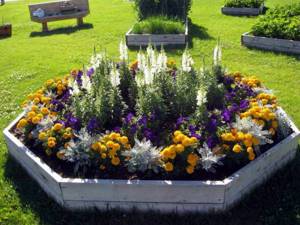
To create a beautiful flower garden, you need to place the plants correctly:
- The background is tall, such as: eupatorium, delphinium, bush asters. If the flower garden is located next to a fence or buildings, then climbing roses, clematis, and sweet peas can be planted in the background.
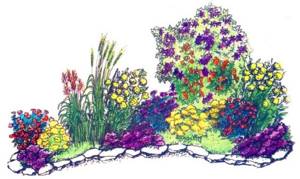
- Central part - in the center there are medium-sized upright specimens: phlox, asters, irises, bells.
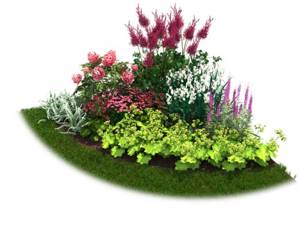
- Foreground - low-growing or ground cover plants, such as hosta, viola, marigolds, thyme, cloves, alpine phlox.

Tips for placing bulbs in a flower garden
First of all, for bulbous plants, you should choose a planting location so that you can admire your flowers. After all, it is the bulbous ones that will decorate the garden during the spring months - after the cold weather they are especially dear to us. In early spring, the craving for beauty is most acutely felt, when during the long gloomy winter we have yearned for bright colors and spectacular forms.
In a small home garden, where, as a rule, there is little free space, early spring bulbous plants can be placed in close proximity to perennials. When the early spring bulbs fade, the unsightly fading tops will be covered by the foliage of growing perennials, such as peonies, ferns or hostas.
If there are no perennials in your flower garden yet, and the foliage of primroses that has lost its decorative effect spoils the appearance of the flower bed, disguise the dying bulbous plants with annual plants. This can be self-grown or purchased seedlings. You can also sow the seeds of unpretentious annuals in advance in the area where the bulbs grow. At the end of May - beginning of June, the flyers will already have gained good growth. Marigolds, nasturtium, escholshiya, godetia, petunia, matthiola and other flowers will perfectly decorate faded early spring bulbous flowers.
Low-growing crocuses, snowdrops, and pushkinias bloom first. Their flowers are located almost on the surface of the earth. In order to be able to see the charming crumbs up close, they should be planted on the edge of flower beds, near paths and paths. Daffodils and tulips, which have large flowers and later flowering periods, can be placed in the background and middle ground of flower beds and in remote corners of the garden. Plant hyacinths and muscari, which give a surprisingly delicate aroma, near the bench and under the windows.
For greater decorativeness, small bulbous plants are planted in groups of 8-10 or more pieces. White snowdrops, pushkinias, purple, lilac, yellow crocuses planted in small groups look very impressive. If you choose a place for planting where the snow melts first, the primroses will bloom early. In order for the plants to bloom at the same time in the spring and have the same height, it is necessary to form a group of bulbs of approximately the same size. Then the flower island will look most neat and impressive.
You don’t have to dig up tulips for two to three years, and daffodils for up to five years. Small-bulbous plants, once planted, can no longer be disturbed at all. Over time, growing in width, they form bright picturesque spots. But in this case, do not forget to somehow (with a flag, a label) mark the places where the bulbs are planted even before the above-ground part of the plants dies. Otherwise, in the fall, when digging the soil, you can damage the dormant bulbs.
When planting bulbs on a lawn or under trees, they are placed so that groups of flowers look natural and appear to be growing wild. In practice, the planting technology is as follows: pour out the bulbs from the palm of your hand near the tree, where the bulb fell - and plant it there. This way you will achieve maximum naturalness of the fit.
What flowers to plant in a flowerbed using the bouquet method
In order for the flowerbed to be beautiful and bloom for a long time, you need to choose the right plants.
The following composition options are available:
Shrub diversity. Specimens with differently colored foliage and bark are suitable for this composition. Hawthorn, barberry, spirea, and forsythia are used for planting.
Fruit composition. To create a fruit composition, apple, pear, cherry and plum are used. This planting has 2 advantages: pollination and space saving. But there is also a minus - poor lighting. To ensure that the plants receive enough light, the branches are spread apart as they grow and secured to the ground with ropes.
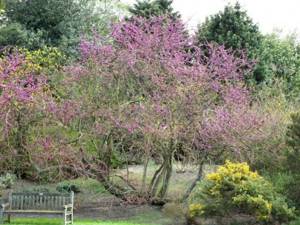
Spring mood - in early spring, the flower garden shows its beauty thanks to small-bulbed specimens: tulips, crocuses, muscari. Next, the flower garden is covered with miniature primroses, daisies, and pansies. At the beginning of summer, daffodils, hyacinths and hazel grouse bloom. Tall perennials look great next to them: swimsuit, magnificent dicentra. The foreground is covered with tuberous anemones, ground cover phlox, and hosta.
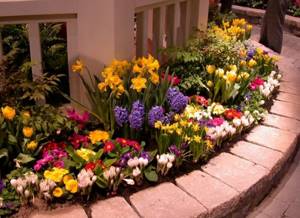
Summer colors. To make bright colors delight you throughout the summer, the bouquet flower bed can be planted with lilies, daylilies, roses, hydrangea, delphinium, cornflowers and astilbe.

Autumn variety. When the heat subsides, a new wave of flowering begins: bush asters, late phlox, chrysanthemums. To extend the summer days, you can plant plants with repeated flowering, such as ageratum, begonia, carnation, and remontant rose.

In bloom all season. If you plant decorative onions and craspedia in a flower garden, you can admire the delicate, beautiful balls with a variety of colors from the end of May until frost.

From the end of May, decorative yarrow begins to bloom, which will not only decorate the garden plot, but also attract pollinating insects.
